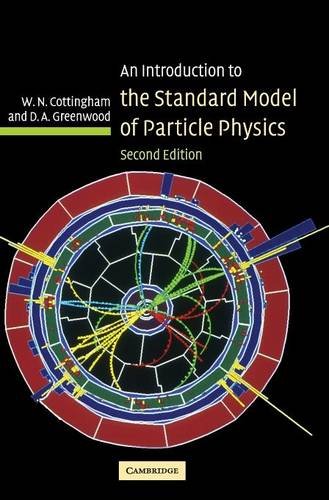An Introduction to the Standard Model of Particle Physics pdf
Par karas shin le samedi, janvier 9 2016, 00:37 - Lien permanent
An Introduction to the Standard Model of Particle Physics by D. A. Greenwood, W. N. Cottingham


An Introduction to the Standard Model of Particle Physics D. A. Greenwood, W. N. Cottingham ebook
Publisher: Cambridge University Press
Page: 294
Format: pdf
ISBN: 0521852498, 9780521852494
Or is it something more exotic? Here's the gist of the standard model, which was developed in the early 1970s: Our entire universe is made of 12 different matter particles and four forces [source: European Organization for Nuclear Research]. The Standard Model of particle physics is described by its symmetries — or the symmetry group (SU(2)xU(1)) under which matter contents transform. The goal is to discover hints of physics beyond the Standard Model of particle physics – but tantalizing glimpses of new physics have been harder to spot than many physicists had expected. To start, we were introduced to the Standard Model of physics, a theory which identifies the set of forces (except gravity) and particles which are believed to make up the whole of the universe (with some yet to be discovered). �The current theoretical framework that describes elementary particles and their forces, known as the Standard Model, is based on experiments that started in 1897 with the discovery of the electron. Among those 12 particles, you'll encounter six quarks and six leptons. Andreas Krassnigg, a physicist with the University of Graz in Austria, explains: ”This Standard Model describes a set of particles from which we can attempt to build the universe as we know it. Even the quantum vacuum of the standard model of particle physics is chiral [1], so that the behavior of the left-handed and right-handed elementary particles (quarks and leptons) are essentially different. Read more about the Higgs boson and why its existence is important in particle physics. So the introduction of this symmetry is very important. Are its properties as expected for the long-sought Higgs boson, the final missing ingredient in the Standard Model of particle physics? What exactly is the Higgs boson? An Introduction to the Standard Model of Particle Physics Pages: The new edition of this introductory graduate textbook provides a concise but accessible introduction to the Standard Model. 1) that emerge under rotation, small differences in the total energy are to be expected, and the situation with l ̂ ∥ - Ω arises from introducing the circular skyrmion in the disk, which has lower energy. 2008, Nambu receives half of the Nobel Prize for introducing the concept of spontaneous symmetry breaking into particle physics, which led, for example, to the explanation of why some particles have mass and others have not (Higgs mechanism). One of the consequences is the . Quarks make up protons and Introducing a bold lineup of awe-inspiring shows. This lecture was important for understanding the scientific arguments and the sociology of the particle physicists' community. I was pretty This introductory statement was shocking.